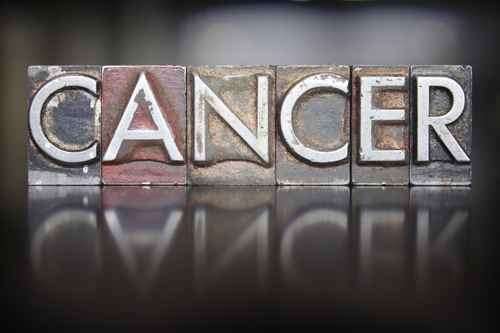Breast cancer continues to be the most commonly diagnosed cancer and the second leading cause of cancer deaths among U.S. women1 . Compared with white women, black women historically have had lower rates of breast cancer incidence and, beginning in the 1980s, higher death rates2 . Jay Harold found a report from the Centers for Disease Control (CDC) that examines age-specific black-white disparities in breast cancer incidence during 1999–2013 and mortality during 2000–2014 in the United States using data from United States Cancer Statistics3 (USCS).
Jay Harold written extensively about Cancer in previous posts. These include:
- 587,000 Americans with Bladder Cancer: 7 Risk Factors
- 8 Symptoms of Prostate Cancer: Risk Factors & Health Tips
- Risk Factors for Cervical Cancer: Higher Rates for Black Women
Jay Harold realizes that words used in medicine sometimes are hard to understand and has provided MedlinePlus to make sense of these medical terms. MedlinePlus helps you find information on medical terms, health conditions, wellness issues, and more in easy-to-read language.
More Details
Overall rates of breast cancer incidence were similar, but death rates remained higher for black women compared with white women. During 1999–2013, breast cancer incidence decreased among white women but increased slightly among black women resulting in a similar average incidence at the end of the period. Breast cancer incidence trends differed by race and age, particularly from 1999 to 2004–2005, when rates decreased only among white women aged ≥50 years. Breast cancer death rates decreased significantly during 2000–2014, regardless of age with patterns varying by race. For women aged ≥50 years, death rates declined significantly faster among white women compared with black women; among women aged <50 years, breast cancer death rates decreased at the same rate among black and white women.

During 2009–2013, approximately 221,000 breast cancers were diagnosed each year. Overall incidence of breast cancer was similar among black women (121.5 cases per 100,000 population) and white women (123.6 cases per 100,000 population), but differences by age and stage were found. Compared with white women, breast cancer incidence was higher among black women aged <60 years, but lower among black women aged ≥60 years. Black women had a lower percentage of breast cancers diagnosed at a localized stage (54%) than did white women (64%). Among white women, breast cancer incidence decreased from 1999 to 2004, and then stabilized, decreasing 0.8% per year on average; however, breast cancer incidence was stable from 1999 to 2005 among black women and then nonsignificantly increased . Breast cancer incidence trends differed by race and age, particularly during 1999–2004 when rates decreased only among white women aged ≥50 years. During 1999–2013, among women aged 60–79 years, rates of breast cancer incidence decreased significantly among white women, but increased significantly among black women.
Breast Cancer Rates Decreased Twice as Fast Among White Women aged 60-69 compared to Black Women
During 2010–2014, approximately 41,000 deaths from breast cancer occurred each year. Breast cancer mortality was 41% higher among black women (29.2 deaths per 100,000 population) than white women (20.6 deaths per 100,000 population). Breast cancer death rates decreased during 2010–2014 among both blacks and whites, although differences in trends by race and age were found . Overall, breast cancer death rates decreased faster among white women (−1.9% per year) compared with black women (−1.5% per year). Among women aged <50 years, breast cancer death rates decreased at the same pace among black and white women, whereas white women aged ≥50 years had significantly larger decreases. The largest difference by race was observed among women aged 60–69 years: breast cancer death rates decreased 2.0% per year among white women compared with 1.0% among black women.
Mortality is approximately 40% higher among Black Women!
Recent trends in breast cancer incidence suggest that the convergence and now equal incidence for black and white women has been primarily because of incidence increasing among black women, particularly among those aged 60–79 years, and concomitant decreasing or stable rates in white women. Breast cancer mortality is approximately 40% higher among black women compared with white women, with faster decreases in mortality among white women. This report confirms previous findings by race overall, and presents age-specific changes for incidence and mortality by race.
A previous CDC report suggested that improvements in follow-up of abnormal screening tests and treatment for breast cancer for black women could address racial disparities4 . Several recent large-scale federal initiatives have provided a novel opportunity to address racial disparities in breast cancer subtypes and beyond at the molecular level. Advances in understanding breast cancer subtypes have improved awareness that black women are more likely to be diagnosed with triple negative breast cancer (negative estrogen receptor, progesterone receptor, and HER2 status), which might have improved the likelihood that they receive the appropriate treatment based on their cancer type5 .
Better Treatments in the Future and 5 things You can Do
Although some of molecular factors that lead to more aggressive breast cancer are known, a fuller understanding of the exact mechanisms might lead to more tailored interventions that could decrease mortality disparities.
- Increase physical activity.
- Increase knowledge of family history of cancer
- Promote a healthy diet to maintain a healthy body weight.
- Increase screening for breast cancer.
- Targeted treatment interventions could reduce racial disparities in breast cancer.
The Precision Medicine Initiative6 promotes advances in research, technology, and policies to enable researchers, providers and patients to work together to develop individualized care by understanding how the molecular characteristics of cancers lead to phenotypic characteristics noted in the clinical setting. The Cancer Moonshot7 is focused on addressing the most pressing needs for cancer control, including accelerating the understanding of cancer and its prevention, early detection, treatment, and cure. Both initiatives are focused on determining the genetic variations that increase risk for aggressive breast cancer so that tailored interventions and treatment plans can be developed.
Three Caveats to Know

).
The findings in this report are subject to at least three limitations. First, race and ethnicity data were ascertained from medical records and death certificates and might be subject to misclassification; however, misclassification is minimal for black and white race (10). Second, the most recent data are several years old, because current requirements for reporting cancer registry data are rigorous and require multiple steps. Finally, cancer registries do not routinely collect risk factor information that could inform the trends noted here.
Breast cancer mortality is decreasing for both black and white women, with equal pace of decrease for younger black and white women. Continued decreases involve accelerating current progress and understanding breast cancer genomics for predicting risk and promoting effective treatment through new initiatives like the Precision Medicine Initiative and Cancer Moonshot. Public health professionals need to work in tandem with scientists and clinical researchers to monitor the successes of these newly developed therapies by assessing disparities at a population level using trends in incidence and death rates.
Enjoyed this post? Share it and read more here. Questions? “Ask the Pharmacist a Question!” Jay Harold is always looking out for your health and wealth.
Please take this advice of Muhammad Ali and give back to others. “Service to others is the rent you pay for your room here on earth.” ~ Muhammad Ali
Bibliography
- https://nccd.cdc.gov/uscs/toptencancers.aspx
- http://onlinelibrary.wiley.com/doi/10.3322/caac.21320/abstract;jsessionid=32C2995AB45F829C557909A3065C588D.f03t02
- https://www.cdc.gov/mmwr/volumes/65/wr/mm6540a1.htm?s_cid=mm6540a1_w
- https://www.ncbi.nlm.nih.gov/pubmed/23151952
- https://www.ncbi.nlm.nih.gov/pubmed/26371147
- https://www.nih.gov/allofus-research-program/frequently-asked-questions
- https://www.cancer.gov/research/key-initiatives/moonshot-cancer-initiative
Corresponding author:




